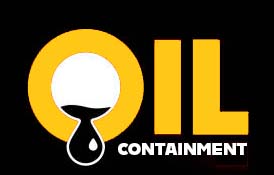In the oil industry, the importance of proper containment barriers cannot be overstated. Containment barriers play a crucial role in preventing leaks and spills from causing environmental damage and posing a threat to human health. As researchers in the field of secondary containment, it is vital to understand the best practices for creating effective barriers that can withstand the harsh conditions of the oil industry.
One of the most commonly used materials for containment barriers in the oil industry is polyurea. Polyurea is a versatile material that offers excellent chemical resistance, durability, and flexibility, making it an ideal choice for secondary containment applications. When properly applied, polyurea can create a seamless, impermeable barrier that can effectively contain any leaks or spills.
To ensure the effectiveness of containment barriers in the oil industry, it is essential to follow proper installation procedures. Here are some key steps to consider when creating containment barriers using polyurea:
-
Surface Preparation:
Before applying polyurea, it is crucial to properly prepare the surface to ensure optimal adhesion. This includes cleaning the surface thoroughly to remove any contaminants, such as oil, grease, or dirt. Any existing coatings or sealants should be removed, and the surface should be roughened to improve bonding. -
Priming:
To enhance the adhesion of polyurea to the substrate, a primer should be applied. The choice of primer will depend on the specific substrate and environmental conditions. Proper priming will help ensure the longevity and effectiveness of the containment barrier. -
Application:
When applying polyurea, it is essential to follow the manufacturer’s guidelines carefully. Proper mixing and application techniques are critical to achieving a uniform and seamless barrier. The thickness of the polyurea coating should also be sufficient to provide adequate protection against leaks and spills. -
Quality Control:
After the polyurea has been applied, it is essential to conduct thorough quality control checks to ensure the integrity of the containment barrier. This includes inspecting for any defects, such as bubbles or pinholes, and addressing them promptly. Regular inspections should also be conducted to detect any signs of wear or damage. -
Maintenance:
To ensure the longevity of the containment barrier, regular maintenance is essential. This may include periodic inspections, repairs, and recoating as necessary. Proper maintenance will help extend the life of the barrier and ensure ongoing protection against leaks and spills.
In conclusion, creating effective containment barriers in the oil industry requires careful planning, proper installation, and ongoing maintenance. By following best practices and utilizing materials such as polyurea, researchers in the field of secondary containment can help prevent environmental disasters and protect the safety of workers and surrounding communities. With attention to detail and a commitment to excellence, containment barriers can provide reliable and long-lasting protection in the challenging environment of the oil industry.
